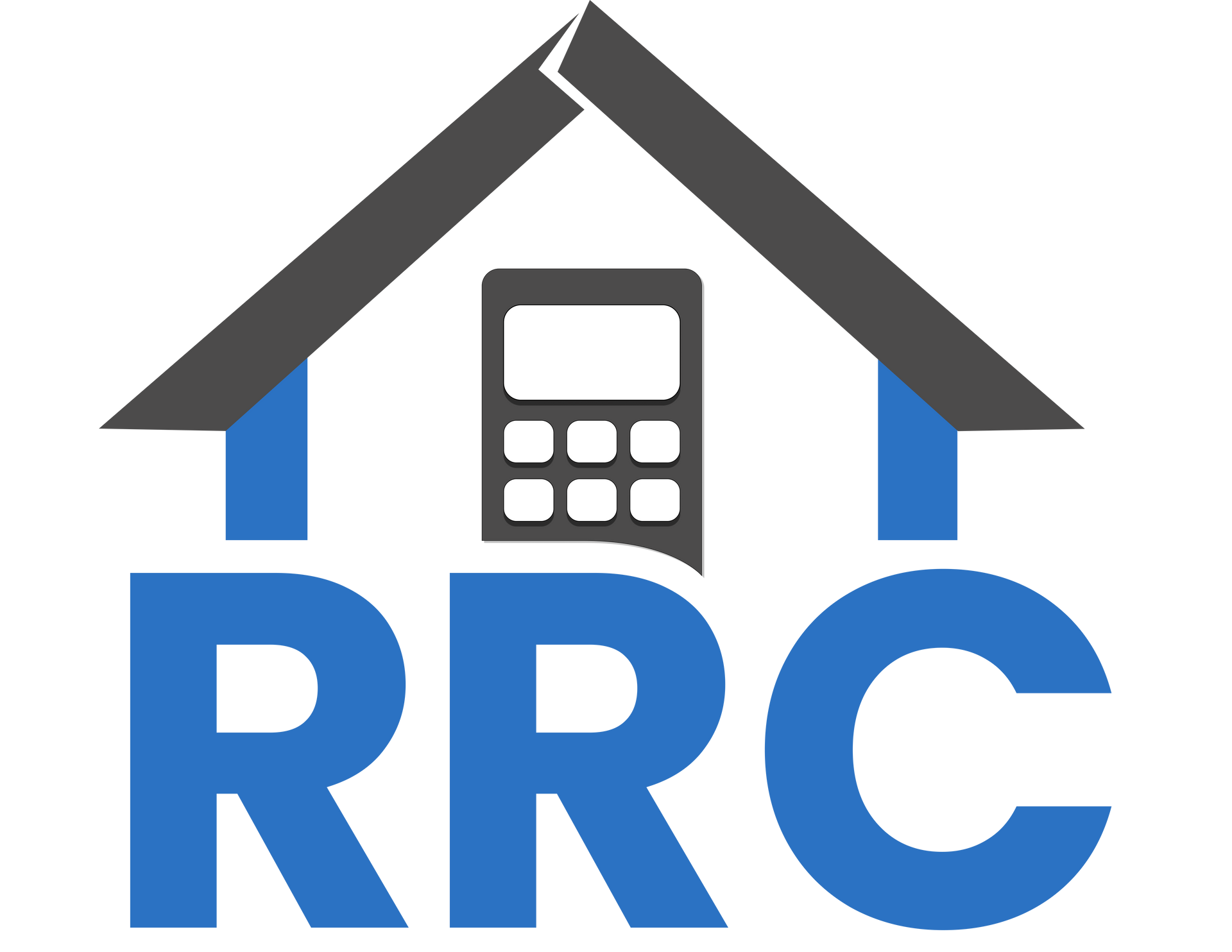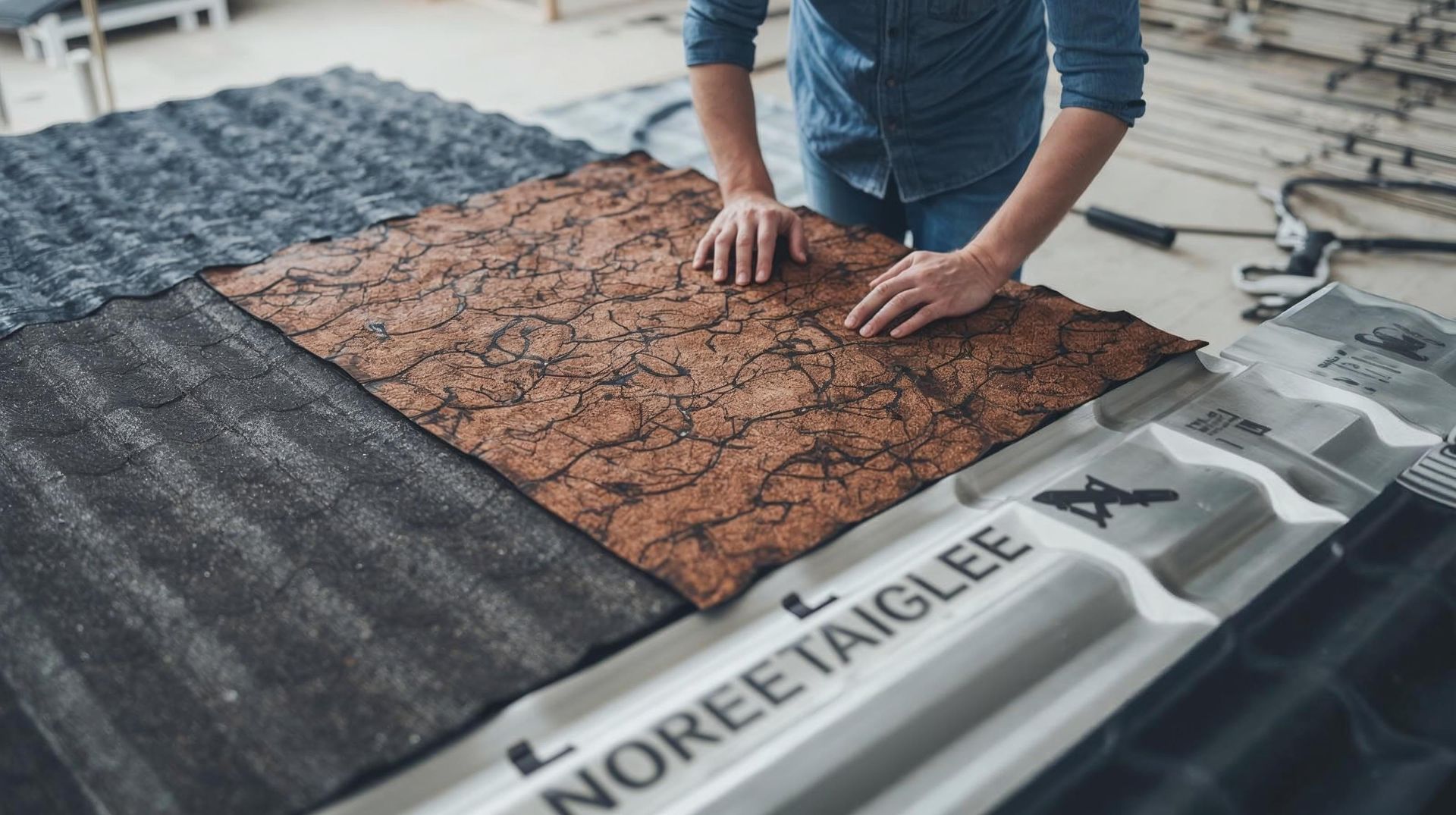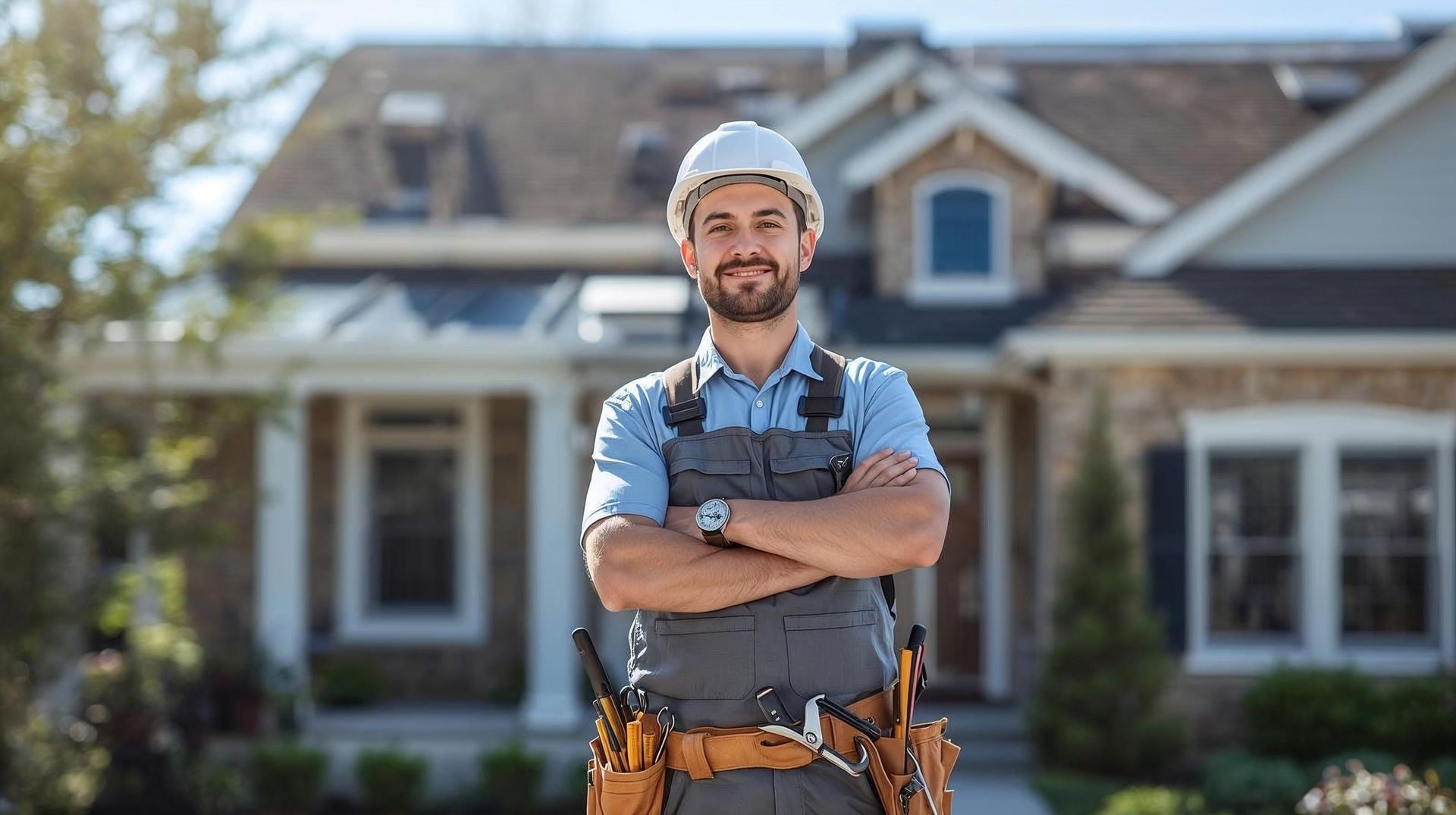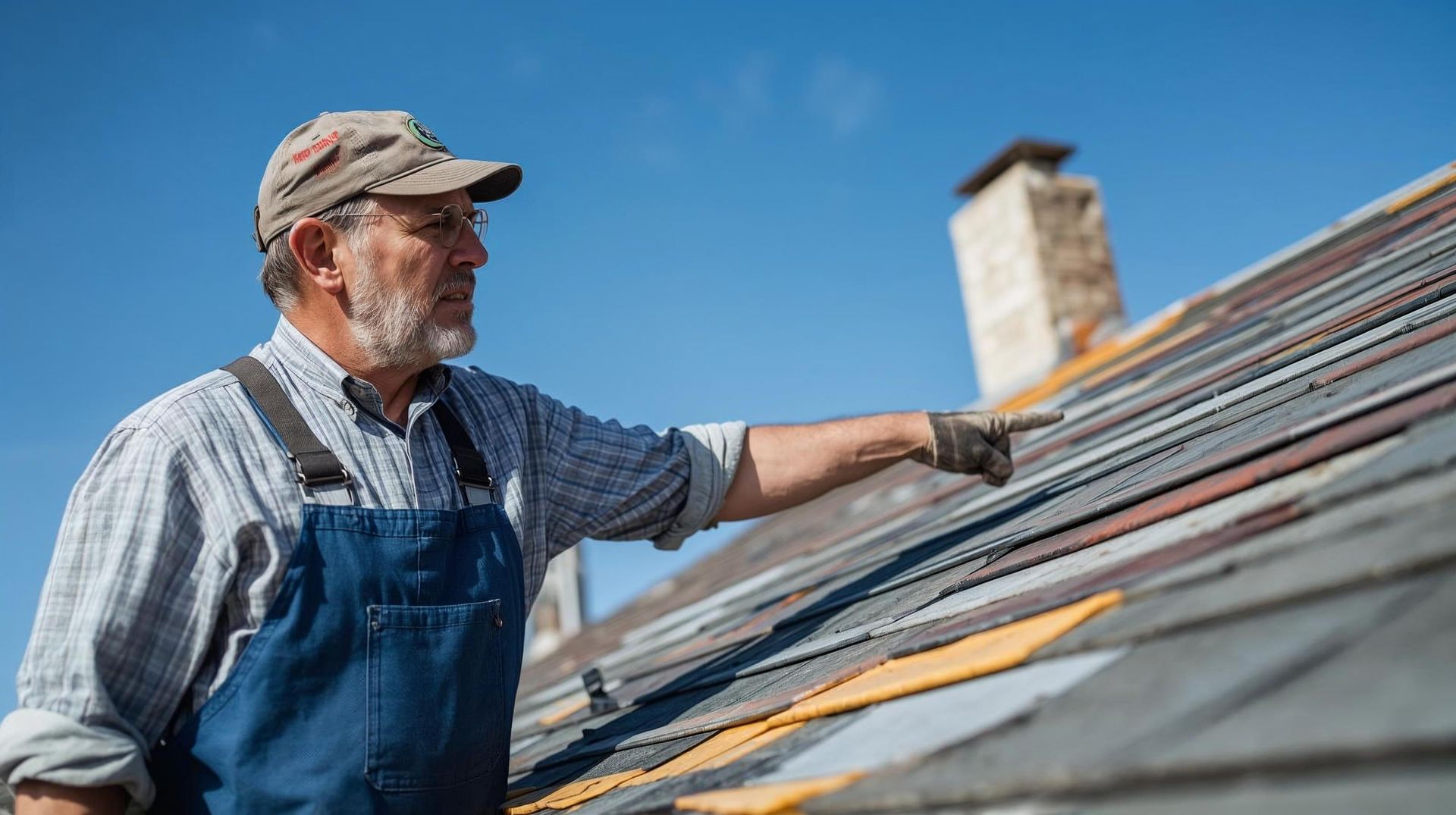10 Key Factors That Influence Roof Replacement Cost
Key Takeaways
- Roof replacement costs typically range from $5,000-$20,000+, depending on several factors.
2. Roof size and materials are the biggest cost drivers.
3. Labor costs and season impact pricing.
4. Steep or complex roof types cost more to replace.
5. Hidden costs like decking repairs can add up.
6. Licensed contractors may charge more but offer better quality.
Thinking of Replacing Your Roof? Do You Know What Affects the Price?
Roof replacement costs can feel unpredictable, but they don't have to be a mystery. Many factors beyond square footage affect the price. Knowing what these are will help you spot fair estimates, ask the right questions, and budget wisely.
So, before you sign any contract or budget for a project, let's explore the 10 major cost factors that can shape your final bill.
1. Roof Size (in Squares)
The larger the roof, the more materials and labor required. Roofers measure size in "squares", with 1 square = 100 square feet.
Example:
- A 12 square roof = 1,200 sq ft.
- A 20 square roof = 2,000 sq ft.
Naturally, that 20-square-foot roof will need more shingles, nails, underlayment, and hours of labor, driving up costs significantly.
Get a rough estimate of your roof size by using our free Roof Cost Calculator before requesting quotes, so you can better understand your contractor's number.
2. Roofing Material Type
Your choice of material has one of the biggest impacts on price. Different roofing options vary in cost, durability, and lifespan.
- Asphalt shingle roofs: $4-$6 per square foot (budget-friendly, 15-25 years lifespan).
- Metal roofing: $7-$12 per square foot (durable, energy-efficient, lasts 40-70 years).
- Tile roofing: $10-$15 per square foot (stylish, heavy, long lifespan, but expensive).
- Slate roofing: $15-$25 per square foot (premium material, beautiful, lasts 75-100 years).
While asphalt shingles are the most common and affordable, metal shingles and panels offer greater durability, energy efficiency, and a sleek, modern look, though they come at a higher price point.
Choosing roofing material is one of the biggest cost drivers. Dive into our Complete roofing material guide for pros, cons, cost ranges, and which option suits your climate best.
3. Roof Complexity & Pitch
A steep or multi-level designs often require more labor, specialized safety harnesses, and additional time, raising your total installation cost.
- Steep roofs require extra safety equipment, more time, and careful handling.
- Complex designs with dormers, valleys, skylights, or multiple levels increase the difficulty.
The rule is simple: The more challenging the layout, the higher the labor cost, leading to a higher total project cost.
4. Tear-Off vs. Overlay
When replacing a roof, you usually have two choices:
- Tear-off - Remove the old shingles and install a new roof (better long-term, more costly).
- Overlay - Install new shingles over the old roof (cheaper upfront cost, but may reduce lifespan).
Keep in mind: Local Building Codes often limit overlays (typically only 1-2 layers allowed).
5. Underlayment & Decking Condition
Your roof isn't just shingles but a whole system. Underneath the surface, there lies underlayment and decking (plywood base).
- If your roof decking is rotten or damaged, it must be replaced, which then adds to the cost.
- Upgraded underlayments like ice & water shields or synthetic membranes improve protection but increase price.
These issues often only appear after the tear-off, which is why estimates sometimes increase mid-project.
6. Labor Costs in Your Area
Most roofing companies offer free estimates, so take advantage of that to compare not just prices but also what's included in their labor and material breakdown. Roofing is labor-intensive, and costs vary by region.
- Urban areas tend to have higher labor costs due to demand.
- Rural areas may be cheaper, but travel fees can apply.
- In some regions, union labor may be required, which adds to costs.
Always ask if your estimate is labor-heavy or material-heavy to see where your money is going.
Want to verify your contractor's quote line by line? Check out our step-by-step guide to getting free roofing estimates. It helps you see how factors like pitch, materials, and labor drive the final numbers.
7. Permits & Local Building Codes
Almost every municipality requires permits for a full roof replacement.
- Permit fees can range from $100 to $1,000, depending on where you live.
- Local building codes may require fire-resistant materials, storm reinforcements, or extra insulation.
These costs are unavoidable, so it's best to know them up front.
8. Season & Project Timing
Timing your roof replacement can save more money than you can guess.
- Summer and early fall are the peak seasons for any replacement or repair, but the prices are higher, and you'll probably have to wait due to high demand.
- Late fall or winter has potential discounts available, but weather delays may occur.
If possible, schedule your project in the off-season for better pricing and contractor availability.
9. Access to the Roof
Not all roofs are equally easy to reach; some have complex designs that require careful execution by the workers.
- Multi-story homes, narrow driveways, or tight lot space make it harder for contractors to bring equipment.
- Some jobs may require cranes, lifts, or extra safety gear, which adds to the bill.
Even debris removal can be more expensive if the space is hard to access.
10. Contractor Warranty & Reputation
The contractor you choose plays a huge role in your total cost to replace a roof or repair in general.
- High-end contractors may charge more but include strong warranties and proven workmanship.
- Cheaper quotes can be tempting, but may come with risks like no insurance, poor installation, or limited warranties.
Remember: When replacing a roof, along with the right material for your house, the roofing crew that installs it is equally important. A great contractor protects your investment.
Bonus Tip: Hidden Costs to Watch Out For
Even with a solid estimate, unexpected costs can sneak up during your roofing installation. These often appear once the old roof is torn off or when contractors uncover hidden damage. Here's what to watch out for so you can prepare in advance and avoid surprise add-ons:
- Dumpster rental & cleanup fees: Most contractors include debris removal, but some charge separately for hauling and disposal. Always confirm whether cleanup is part of your quote.
- Damaged decking or structural repairs: Once the old shingles are removed, contractors may discover rotted plywood, sagging trusses, or water-damaged decking. These repairs are essential for your roof, but they can add hundreds to your total.
- Skylight or roof flashing replacements: If you have skylights, chimneys, or dormers, their flashing (the metal that seals joints) may need replacing. Ignoring old or rusted flashing can cause leaks even after new shingles are installed.
- Ventilation and insulation upgrades: Poor attic ventilation can shorten the lifespan of new architectural asphalt shingles. Some contractors recommend installing ridge vents or attic fans; an extra cost, but a smart investment in preventing moisture and heat buildup.
- Gutter and downspout adjustments: New roofing may change your roofing slightly. If gutters or downspouts are misaligned or rusted, replacing them during installation is often cheaper than calling someone later.
- Chimney repairs or repointing: If your chimney mortar is cracked or crumbling, contractors might suggest repairs to prevent leaks near the base. This isn't always included in roofing estimates.
- Unexpected labor surcharges: Hard-to-reach areas, multiple roof levels, or steep slopes often need extra labor hours or safety equipment.
- Permits and inspection fees: While usually small, local permits and required inspections can add to your overall price, especially if you live in a strict building-code area.
- Unplanned complex roof design changes: During replacement, you might decide to switch to a different shingle, add an energy-efficient underlayment, or upgrade to a more expensive roofing material. Those decisions can shift your average roof cost upward but also improve your roof's lifespan and resale value.
Before your project begins, always ask your contractors to outline potential extra costs and set aside a contingency budget of 10-15%. This ensures you're prepared if anything unexpected shows up once your old roof comes off.
Read our DIY roof inspection checklist to spot missing shingles, water damage, and structural issues yourself.
Quick Comparison Table: Major vs. Minor Cost Drivers
When you're comparing quotes, it helps to understand how each factor weighs into the overall price of your roofing installation. The average roof replacement cost for an average home can range widely depending on details like materials, pitch, and labor.
For instance, choosing architectural shingles instead of basic 3-tab ones might cost more upfront, but can delay the need for a roofing replacement sooner. Likewise, using an expensive roofing material like slate can drive up the price but offer decades of protection.
Below is a quick look at how each element affects your overall cost and how to balance reliability and affordability for a truly cost-effective, reliable roof.
| Factor | Cost Impact | Notes |
|---|---|---|
| Roof Size | Major | Bigger roof = more materials + labor |
| Roofing Material | Major | Wide range in price & lifespan |
| Roof Pitch/Complexity | Major | Steep or complex = higher labor costs |
| Tear-off vs. Overlay | Major | Tear-off adds disposal & labor |
| Underlayment/Decking | Modetate | Repairs/replacements add hidden costs |
| Labor Rates | Moderate | Vary depending on your location & season |
| Permits/Codes | Major | Required by law, varies by city |
| Season/Timing | Minor-Moderate | Off-season may save money |
| Roof Access | Moderate | Hard access increases cost |
| Warranty/Contractor | Major | Quality & long-term savings |
As you can see, every factor from the size of your entire roof to the type of shingles you choose plays a distinct role in shaping your total investment. Even small issues, like missing shingles or unnoticed decking damage, can raise costs if you don't get your roof inspected early.
The key is to view your roofing installation not as a one-time expense but as a long-term investment in a reliable roof that protects your home and wallet. By understanding how each detail affects the overall cost, you'll make smarter, more confident choices for a roof that's both durable and cost-effective.
Tips for Saving on Roof Replacement Cost
A new roof can feel like a heavy financial lift, but smart planning can make the project much more cost-effective, without cutting corners on quality. Here are some insider-backed ways to save while still ending up with a reliable roof that lasts for decades.
- Don't jump at the lowest quote; get at least 3-5 estimates from licensed contractors before choosing.
- Ask about off-season discounts or promotions. Contractors are less busy during the off-season. Plus, you can schedule your roof inspection in advance to plan a smooth replacement before season pricing kicks in.
- If you're replacing an older roof, you don't always need the most expensive roofing material. Choose materials that balance cost and durability.
- Getting your roof inspected every year or after major storms helps you catch missing shingles or small leaks early. Timely repairs prevent major damage that could force you into a full replacement sooner than expected.
- If your existing decking or underlayment is in good condition, ask if it can be reused. This can trim hundreds off your overall cost while still ensuring a reliable roof, as long as it passes inspection.
- Check for insurance coverage or local incentives.
- Bundle home repairs together. Contractors often offer bundle discounts for multi-service jobs, which can lower your overall average roof replacement cost.
- Get everything in writing. Ensure your contract clearly outlines materials, labor, timelines, and manufacturer warranties. It's your best protection against surprise fees and ensures a transparent, cost-effective process from start to finish.
- Prepare in advance to avoid emergency replacements when prices are highest.
- Before signing, ask your contractor: "What's the most budget-friendly way to keep this roof durable for at least 20 years?" A good roofer won't just quote a number; they'll guide you toward smarter, more cost-effective decisions that reduce your total cost in the long run.
Conclusion
By now, it's clear that roof replacement costs aren't determined by one or two elements; they are a combination of design, material, labor, and local conditions that work together behind the scenes. Every decision, from the type of shingle to the time of year you replace your roof, can shift your quote by thousands of dollars.
Understanding these factors allows you to analyze each estimate for what it truly represents, not just the number at the bottom of the page. A detailed quote with clear breakdowns of materials, labor, permits, and potential contingencies often signals a contractor who values transparency and quality over quick deals.
Before committing to a review, at least three detailed estimates, research local material costs, and verify roofing contractor credentials. The time you spend comparing now could save you years of repairs and unnecessary expenses later.
Your roof protects everything beneath it. Make sure it's worth the investment.
Use our Free Roof Cost Calculator to plan confidently, or Contact Us for a detailed consultation on your roofing project.
What's the average cost of a new roof?
Typically between $8,000-$15,000, depending on roof size and material.
Is roof replacement covered by insurance?
Yes, if caused by storm damage or natural disasters. No, if it's regular wear and tear.
Can I save money by doing part of the work myself?
No recommended; roofing is a dangerous job, and DIY jobs can void warranties, plus the risk involved.
How long does a roof replacement take?
Most homes: 1-3 days, depending on size and complexity.
Are cheaper materials a good idea?
Not always, they may save money up front, but wear out faster, costing more over time.



